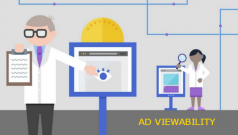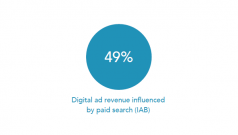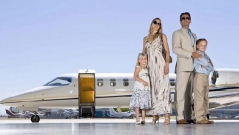A report released yesterday by San Francisco-based travel marketers Sojern outlines the challenges facing travel marketers in 2019. Results are based on responses to a global survey of 600+ travel marketers.
Highlights:
Top 5 marketing challenges overall (% of respondents mentioning):
- Delivering personalized ads and offers in real time (46%)
- Achieving ROI and profitability targets (45%)
- Targeting travelers at specific points of buying cycle
- Keeping up with changes to advertising and technology
- Understanding how to best use customer data
Media distribution of global ad spend:
- Digital 47%
- Print 16%
- TV 13%
- Out of Home 12%
- Radio 8%
- Other 4%
Small advertisers spent 64% of their budgets on digital, mid-size advertisers 44% and large advertisers 43%.
2018 global digital ad spend breakdown by channel:
- Facebook and Instagram 23%
- Paid search 19%
- Private marketplace 12%
- Programmatic Display 10%
- Video 9%
- Mobile 9%
- Other social networks 7%
- OTAs 6%
- Metasearch 5%
Top channels for which marketers plan to increase spend in 2019:
- Facebook and Instagram 55%
- Video 46%
- Paid search 45%
- Mobile 45%
Top 3 channels for brand building (global):
- Facebook and Instagram 69%
- Paid search 34%
- Video 20%
Top 3 channels for direct response (global):
- Facebook and Instagram 58%
- Paid search 37%
- Private marketplace 22%
Global use of social ads in 2018:
- Facebook Ads 79%
- Instagram Ads 59%
- Facebook Dynamic Ads for Travel 47%
- Instagram Stories 44%
- Facebook Stories 41%
- Twitter Ads 38%
- Pinterest Ads 23%
- Snapchat Ads 22%
Top 3 social ads planned for use in 2019 (global):
- Facebook Ads 65%
- Instagram Ads 58%
- Facebook Dynamic Ads for Travel 57%
An exception: Small advertisers are less willing to experiment with social ads; 26 % said they plan to use Twitter ads, 20% Pinterest ads, 17% Snapchat ads.
Top 3 global best uses for Facebook and Instagram Ads:
- Targeting new audiences
- Driving reach and brand awareness
- Personalizing messages and offers
Top 5 metrics used to measure ad effectiveness:
- Website traffic 54%
- Cost per booking 50%
- Clickthrough rate 38%
- Social media mentions 35%
- Loyalty program opt-ins or e-mail collection 31%
Top 3 global reasons marketers say the right data are essential:
- Need the ability to target travelers based on intent or where they are in the buying cycle
- Want better visibility of traveler behavior across websites and apps
- Need to know if winning or losing customers on the way to conversion
Top 3 emerging technologies marketers say they plan to use in 2019:
- SMS or messaging apps 41%
- Real-time audience travel data 39%
- Real-time supply and demand data 38%
====================================
Comments:
- Although these data come from a survey of people who are no less fallible than we are, and much of their survey data involves projections (educated guesses), there were 600+ of them and they're professional travel marketers. So these results deserve our attention.
- Small advertisers lead in the adoption of the digital channel - probably because investment required is lower and ROI is higher. But larger advertisers are getting onboard.
- But small advertisers have avoided getting deeply into social-media advertising. That's probably prudent, considering ongoing Facebook mis-steps and the relative iffiness of social-media metrics when it comes to ROI. (Likes are good but bookings are better.)
- Marketers picked paid search - for all practical purposes Google Ads - as a solid channel in terms of 2018 ad spend, 2019 increased ad spend, brand building and direct response. Granularity of ad performance metrics and use of AI and machine learning to establish traveler intent at different points in the buying cycle are significant strengths of paid search, especially for advertisers with limited budgets.
- Too many marketers (54%) are still using website traffic as a key performance indicator for ads. Probably website traffic correlates more closely with social-media spend than with bookings.
- Average global ad spend share of 9% for mobile is too low. More ads are viewed on mobile devices than on desktops, particularly in the travel vertical where many products are researched and bought in-journey or in-destination. A savvy travel marketer should be able to gain an edge over competitors, even in this crowded marketplace, by running campaigns that really pop in mobile.

 - David
- David


Comments on Personalization, emerging technologies and customer data utilization challenge travel marketers in 2019
i am from Italy hello. Can you help me translate? /rardor